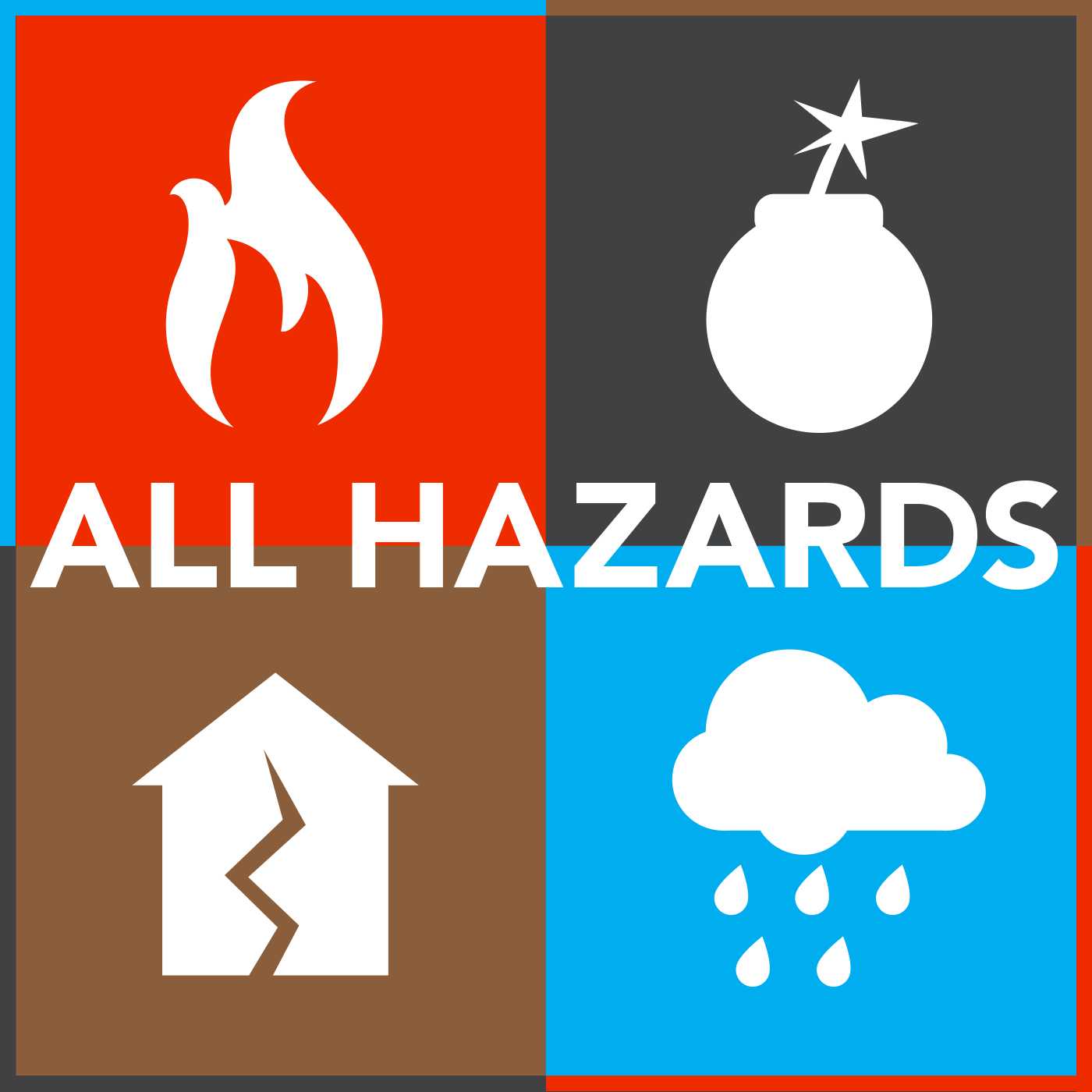Episodes
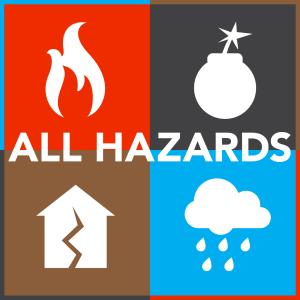
Tuesday Oct 03, 2017
Tuesday Oct 03, 2017
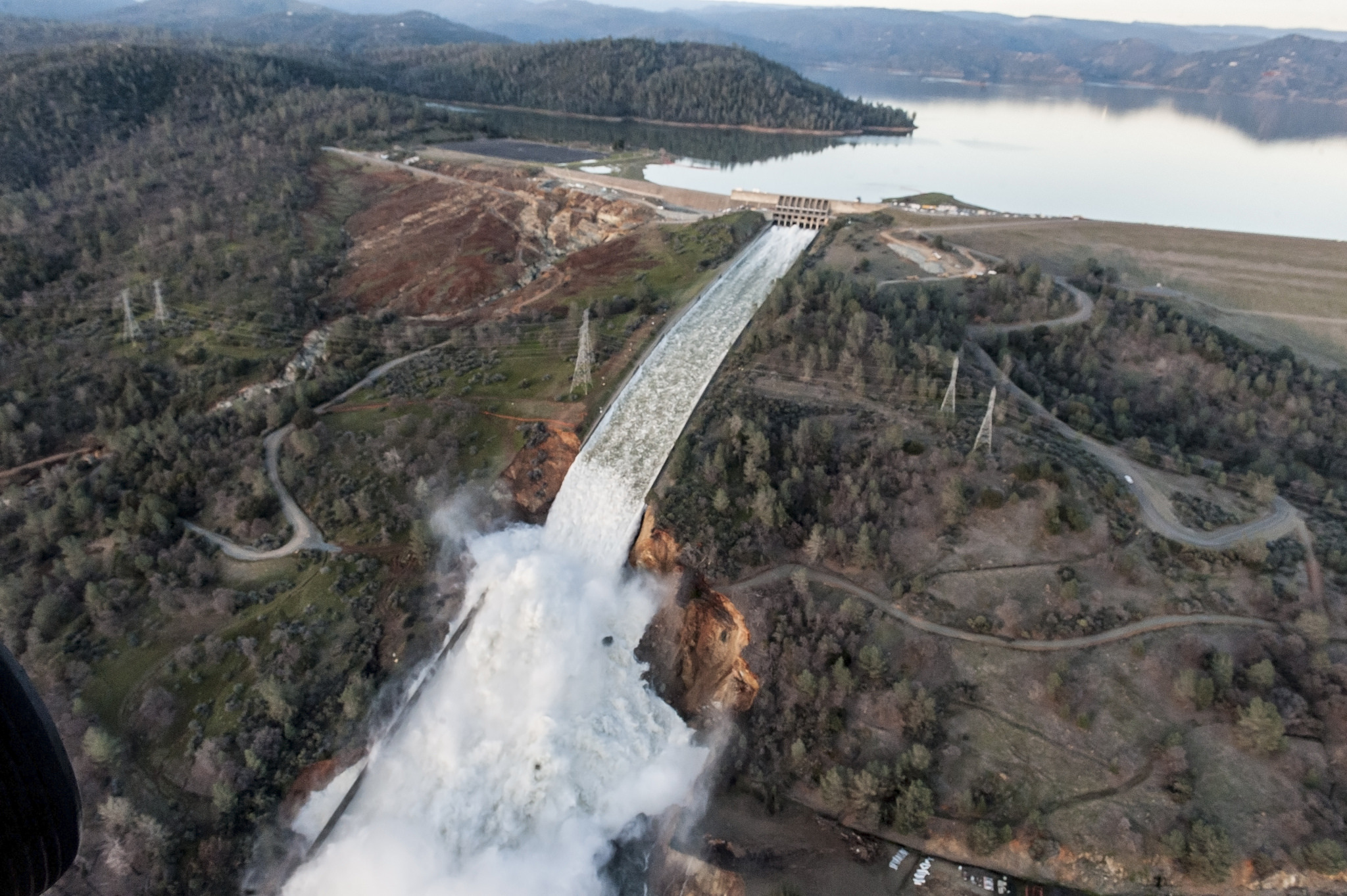 Being a dispatcher is stressful enough, but imagine being one when your entire county must evacuate? In this episode, Cal OES Public Information Officers Robb Mayberry and Monica Vargas chat with two dispatchers from the Butte County Sheriff’s Office about what it was like when evacuations were ordered for Butte, Sutter, and Yuba Counties this last February.
Being a dispatcher is stressful enough, but imagine being one when your entire county must evacuate? In this episode, Cal OES Public Information Officers Robb Mayberry and Monica Vargas chat with two dispatchers from the Butte County Sheriff’s Office about what it was like when evacuations were ordered for Butte, Sutter, and Yuba Counties this last February.

Dispatchers Jenifer Honea and Trina Valeigh speak openly about their experience and what was going through their minds during the Oroville Dam Spillway Incident. Hear how first responders and this community came together and maintained operations during a stressful time. They will share how they managed to answer the incoming calls while at the same time having to relocate an entire dispatch center, which laid in the path of possible flood waters. Get tips on how to be better prepared in case you ever have to leave your home because of the threat of an imminent disaster. Find out the one thing you should do when you move into a new community. This episode offers valuable information for those thinking about starting a career as a dispatcher and is eye-opening for even the most seasoned dispatchers.

Links
Oroville Spillway Incident Resource Page
Oroville Spillway Incident in Pictures
Photos
- Kimber the Butte County Sheriff’s Office Dispatch Dog
- From Right to Left Butte County Sheriff’s Office Dispatchers Jennifer Honea, Trina Valeigh, Cal OES PIOs Monica Vargas and Robb Mayberry
- Oroville Dam

Tuesday Sep 19, 2017
Captain Pace Stokes Takes the Helm on the Ghost Ship Fire
Tuesday Sep 19, 2017
Tuesday Sep 19, 2017
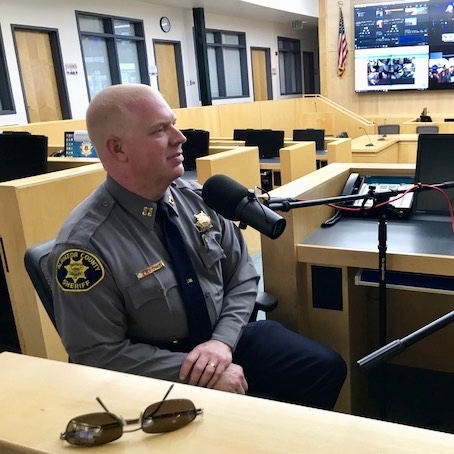
Captain Pace Stokes, Alameda County Office of Homeland Security and Emergency Services, sat down with Shawn Boyd at the Alameda County Emergency Operations Center in Dublin, California. Their recording session took place on day-1 of Urban Shield. For this year’s exercise Capt. Stokes was the deputy incident commander, where he said this was the first year that CERT was actively involved in the exercise and that there was a competitive element to their training. Capt. Stokes also talks about what helps him manage a large-scale training exercise like Urban Shield (there were 63 sites across five counties involved,) and about the ghost ship warehouse fire that killed 36 people on December 2, 2016 in Oakland.
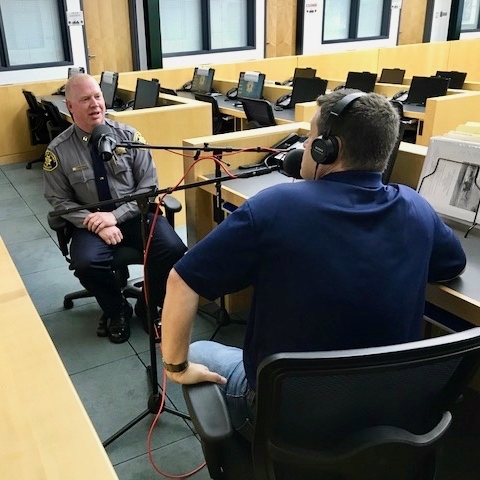
Links
Cal OES Video Blog on Urban Shield and CERT

Tuesday Aug 22, 2017
Public Information Officers: Old Dogs, New Tricks
Tuesday Aug 22, 2017
Tuesday Aug 22, 2017
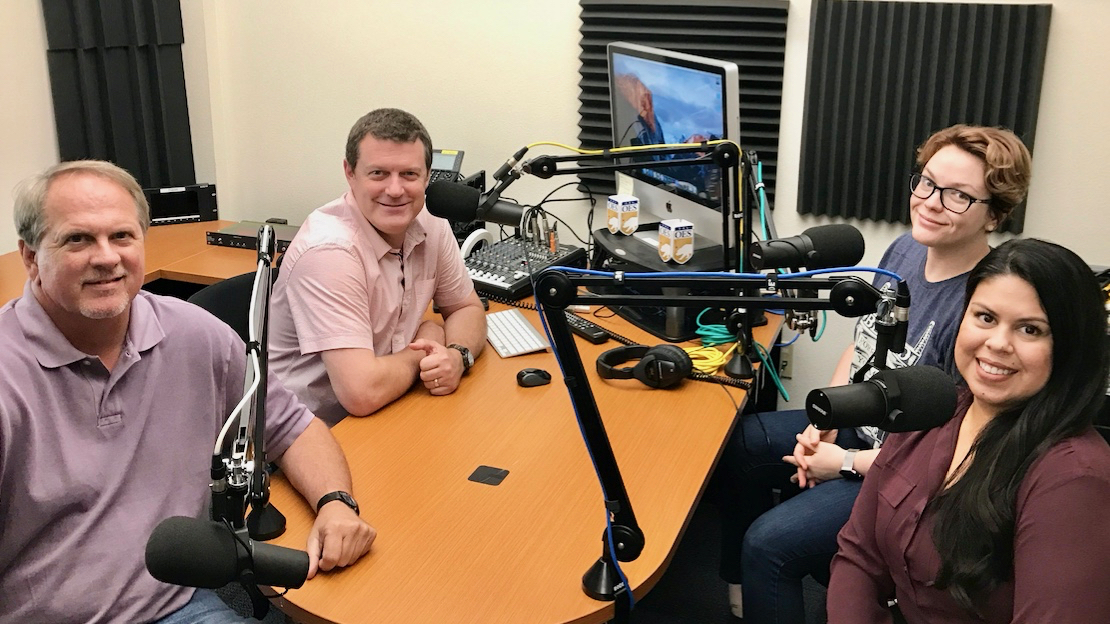
Right to left: John Larimore, Shawn Boyd, Adria Wells, Monica Vargas
Press releases are starting to become a thing of the past, while podcasts, videos and infographics are becoming the future. Why? Information overload, smartphones and packed schedules (among many other reasons) is nudging traditional communications to adapt and change the way information is packaged and shared. Now don’t get it wrong, press releases have their place – but there is always room for change, especially when it comes to serving the public and providing information efficiently.
In this episode, we chat with the Cal OES team about some of the new and improved ways of doing things as a team. Monica Vargas, Shawn Boyd, John Larimore, and Adria Wells share their experience, insight from the perspective of the PIO, graphic designer and videographer.
Links
Cal OES Inside Look: Mutual Aid

Tuesday Aug 08, 2017
Pyrocumulus Clouds, The Six P's and Safety on the Modoc July Complex Fire
Tuesday Aug 08, 2017
Tuesday Aug 08, 2017
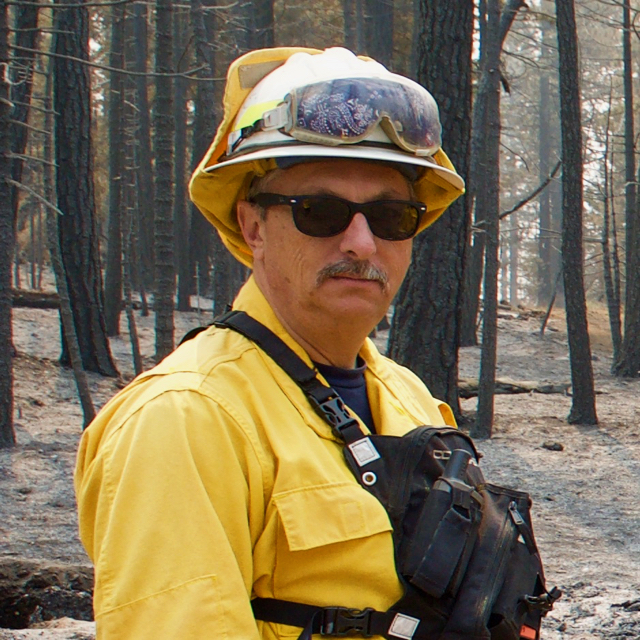
Dave Welch is a 24 year veteran of the Rohnert Park Police Department (Department of Public Safety) and has been with Rancho Adobe Fire Protection District in Sonoma County where he’s currently a part time battalion chief. He’s serving as a Type I and Type II safety officer on the Modoc July Complex fire in Modoc County, California.
Links
Rancho Adobe Fire Protection District
Levels and Types of ICS Management
Type 5: (very small wildland fire only)
• Initial attack
• Short duration, seldom lasting into the next burn period
• Few resources assigned (generally less than 6 people)
• Little complexity
Type 4
• Initial attack or first response to an incident
• IC is “hands on” leader and performs all functions of Operations, Logistics, Planning, and Finance
• Few resources are used (several individuals or a single strike team)
• Normally limited to one operational period
• Does not require a written Incident Action Plan (IAP)
• Examples: Search & Rescue (SAR), motor vehicle accidents, small fires
Type 3
• Extended initial attack on wildland fires
• IC walks the line between a manager and a 'doer'
• Resources may vary from several single resources to several task forces or strike teams
• Some Command/General Staff positions (ie, Division Supervisor, Unit Leader), may be filled
• May extend into another operational period (12 hours), and require an IAP
• Examples: Larger SAR’s, law enforcement incidents, special events, technical rescues, fires
Type 2
• IC spends all time being a manager
• Most Command and General staff positions are filled
• Large number of resources utilized
• Incident extends into multiple operational periods
• Base camp(s) established
• Significant logistical support is required
• Examples: Major fires, VIP visits, lengthy search and rescues, law enforcement incidents, multi-day special events
Type 1
• All functions are filled, plus leaders, branches etc.
• Multi-agency and national resources
• Large number of personnel and equipment are assigned to the incident
• It is a large, complex incident
• Examples: A major Incident—hurricanes, very large fires, natural disasters

Tuesday Jul 18, 2017
Large Scale Disaster Management with Bob Fenton (encore presentation)
Tuesday Jul 18, 2017
Tuesday Jul 18, 2017
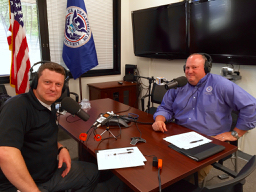
Imagine this situation — the first time you visit New York City it just happens to be on 9/11. The second time you visit is during Hurricane Sandy, and the third time, would you even go back? The man we’re going to talk to today experienced that string of disasters and suddenly found himself leading the initial emergency response to those historical events. He’s a UC Davis alum and 5th generation San Franciscan.
Robert J. Fenton, Jr. was appointed Regional Administrator for FEMA Region IX in July 2015. Since joining FEMA in 1996, Mr. Fenton has played a significant role in numerous large-scale response and recovery operations in the U.S. and has responded to more than 50 Federal disasters, including Hurricane Katrina, the four Florida Hurricanes of 2004, the Southern California Wildfires of 2003 and 2007, the Super Typhoon Pongsona in Guam, and the 9/11 World Trade Center terrorist attacks.
Links
FEMA Region IX: Arizona, California, Hawaii, Nevada, & the Pacific Islands

Tuesday Jun 27, 2017
Lake Tahoe's Angora Fire Commemorated with 10 Year Anniversary
Tuesday Jun 27, 2017
Tuesday Jun 27, 2017
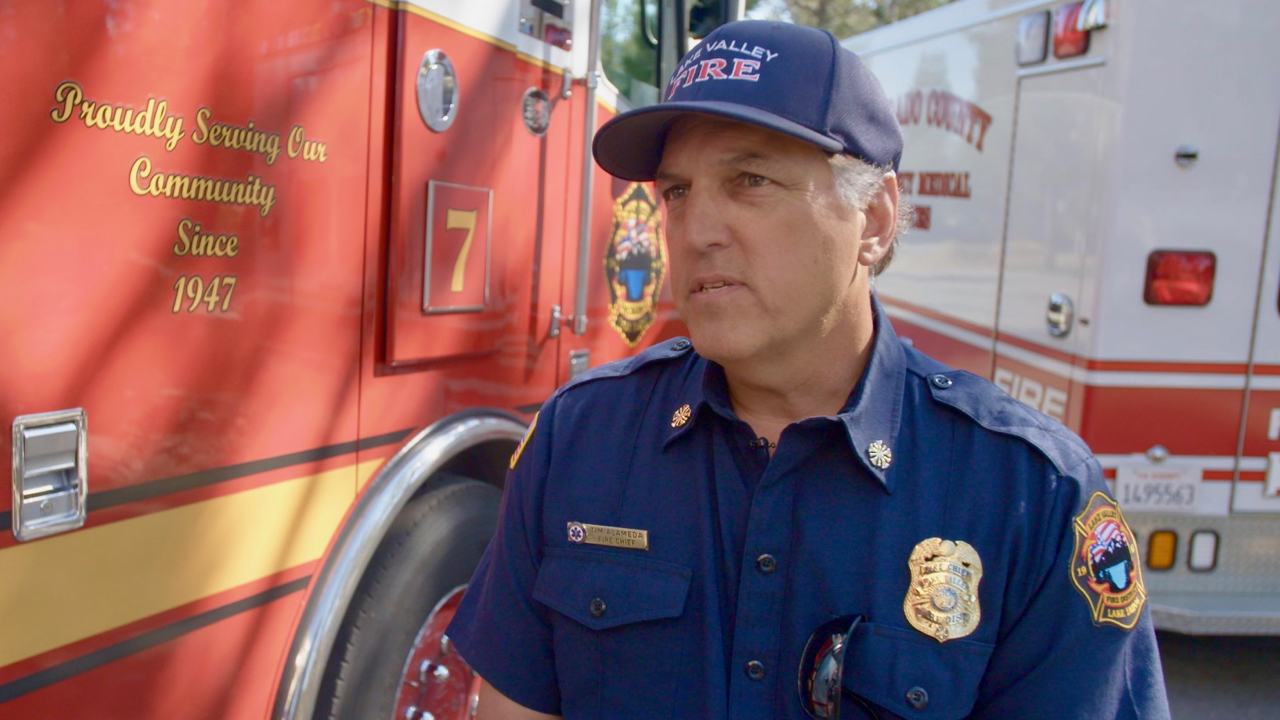
In this episode we travel to South Lake Tahoe to talk with Chief Tim Alameda of the Lake Valley Fire District. We caught up with him days before they commemorated the 10th anniversary of the Angora Fire.
According to an article in the Lake Tahoe News published September 13, 2016, "Alameda was a division chief and the fire marshal for North Tahoe Fire Protection District prior to joining the LVFD in 2016.
Alameda got his start as a firefighter reserve in Meyers in the 1980s. At that time is was a joint program between Lake Valley and South Lake Tahoe fire departments.
Starting in 1984 he spent 27 years with Reno Fire Department. He went from a rank and file firefighter to the chief.
In 2011, Alameda retired from Reno. North Tahoe recruited him to be a fire marshal. He took this job seriously – spending many a day walking around his jurisdiction, into businesses and talking to people. He was seeing where the hazards were, listened to concerns and helped educate people.
He rose to division chief and then took over Meeks Bay.
Those in the fire community call Alameda a true professional, forward thinker and good with personnel. Until the ink is dry, people were hesitant to go on the record about Alameda. The same goes for his current boss, Mike Schwartz.
Wildland fires are something Alameda is well aware of. He was president in 2015 of the Lake Tahoe Basin Fire Chief’s Association. The wildland urban interface is a constant issue for fire agencies when it comes to protecting the community from a blaze that starts in the forest.
While he didn’t lose a structure during the Angora Fire, a house he and his dad built on Boulder Mountain was destroyed.
Those 254 houses that burned in 2007 were part of that wildland urban interface.
As a kid, he spent many summer days fishing at Angora Lakes or hunting grouse in the area."
To read the entire article click here.
Links
The Angora Fire 10 Years Later: What have we learned? Field Trip & Symposium
Angora Fire Restoration Project

Tuesday Jun 06, 2017
The Age of Massive Data Breaches
Tuesday Jun 06, 2017
Tuesday Jun 06, 2017

From Left to Right in Photo:
ELI OWEN, Deputy Commander, California State Threat Assessment Center
THOR EDEN, California Cyber Security Integration Center
MICHAEL CREWS, Cal OES Information Security Officer
For this episode we brought three of California’s cyber security gurus who talk about some of things you and your agency/company can and should be doing to protect yourself from cybercrime. October is National Cyber Security Awareness Month which is an annual campaign to raise awareness about cybersecurity, but any month, any day is a good day to beef up your own personal protection. We live in a world that is more connected than ever before. The Internet touches almost all aspects of everyone’s daily life, whether we realize it or not. National Cyber Security Awareness Month (NCSAM) is designed to engage and educate public and private sector partners through events and initiatives to raise awareness about cybersecurity, provide them with tools and resources needed to stay safe online, and increase the resiliency of the Nation in the event of a cyber incident. (Source: Dept. of Homeland Security)
California Cybersecurity Integration Center’s (CalCSIC) mission is to reduce the likelihood and severity of cyber incidents that may significantly compromise the security and resilience of California’s economy, its critical infrastructure, and information resources. Cal OES executes this mission together with CDT, CHP and CMD. Cal-CSIC is comprised of two key functional components: (1) cyber threat analysis; and, (2) dissemination and coordination of incident response and recovery operations (hereinafter “recovery”). Specifically, Cal-CSIC coordinates the identification, prevention or mitigation of cyber threats, as well as coordinates the response to, and recovery from significant cyber incidents. Cal-CSIC coordinates the production of threat assessments for the State, and facilitates analysis and exchange of cyber threat information with all affected organizations.
Terms Used:
Cyber Crime – Crime conducted via the Internet or some other computer network
APT – Advanced Persistent Threat
Social Engineering – a line of attack that relies heavily on human interaction and often involves tricking people into breaking normal security procedures. (Source: TechTarget)
Spycraft – (aka Tradecraft) Within the intelligence community, this refers to the techniques, methods and technologies used in modern espionage (spying) and generally, as part of the activity of intelligence.
Polymorphic – Polymorphic malware is harmful, destructive or intrusive computer software such as a virus, worm, Trojan or spyware that constantly changes ("morphs"), making it difficult to detect with anti-malware programs. Evolution of the malicious code can occur in a variety of ways such as filename changes, compression and encryption with variable keys. (Source: TechTarget)
Spear phishing – An email that appears to be from an individual or business that you know. But it isn't. It's from the same criminal hackers who want your credit card and bank account numbers, passwords, and the financial information on your PC.
Ransomware – There are different types of ransomware. However, all of them will prevent you from using your PC normally, and they will all ask you to do something before you can use your PC. They can target any PC users, whether it’s a home computer, endpoints in an enterprise network, or servers used by a government agency or healthcare provider.
Ransomware can:
Prevent you from accessing your computer.
Encrypt files so you can't use them.
Stop certain apps from running (like your web browser).
Ransomware will demand that you pay money (a “ransom”) to get access to your PC or files. We have also seen them make you complete surveys.
There is no guarantee that paying the fine or doing what the ransomware tells you will give access to your PC or files again. (Source: Microsoft)
Links:
Cal-CSIC Announcement
https://www.gov.ca.gov/news.php?id=19083
For more information on partnering with Cal-CSIC
state.cybersecurity@caloes.ca.gov
Cal OES Cal-CSIC
IT Peer Network Article
https://itpeernetwork.intel.com/california-to-establish-a-cybersecurity-integration-center/
Stop Think Connect
Interpol
Ransomware Help

Tuesday May 23, 2017
What We've Learned from Our First Year of Podcasting Can Benefit You
Tuesday May 23, 2017
Tuesday May 23, 2017

In this episode of the All Hazards podcast Cal OES Deputy Director Kelly Huston takes over the mic and interviews host Shawn Boyd. At almost 30 episodes Mr. Huston thought this would be a good time to grill Mr. Boyd about what this foray into the podcasting world has taught us. The Cal OES Office of Public Information employs what’s called “multi-modal communications” to get our messaging out to stakeholders and the public. So launching our own podcast seemed to be a logical avenue but one that would also be a test of the platform for our needs.
So treat this episode, #29, as a learning tool for you if you’re considering producing a podcast in your own communications office. Depending on what you hear you may want to dive right in, or swim for your life. Either way we hope it’s helpful.

Kelly Huston Engineers Mark Ghilarducci's Interview
Shawn Boyd joined state service and Cal OES in May, 2014 and is a veteran TV news journalist, spending 20 years in local news as an Edward R. Murrow winning anchor/reporter, and executive producer. He’s a graduate of Cal State University Sacramento in media communications.
Links

Tuesday May 09, 2017
Going Nuclear with Cal OES's Radiological Preparedness Unit
Tuesday May 09, 2017
Tuesday May 09, 2017
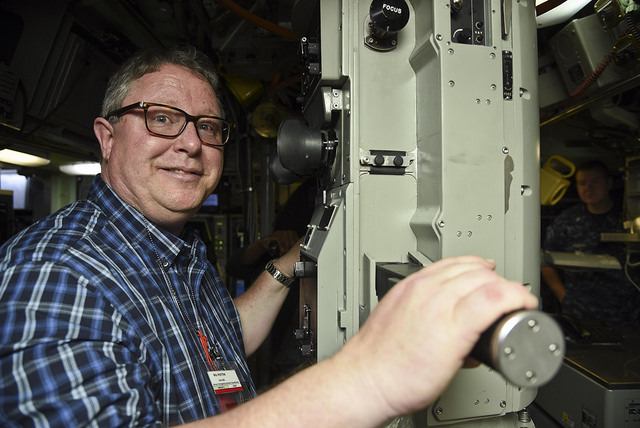
In this episode (28) we talk with Bill Potter, Senior Emergency Services Coordinator for the California Governor's Office of Emergency Services. He’s been with Cal OES for 15 years, all with the Radiological Preparedness Unit as lead for the Nuclear Power Plant program.
In 1979, following the accident at Three Mile Island nuclear power plant in Pennsylvania, the California State Legislature mandated that the California Office of Emergency Services (Cal OES), together with the California Department of Public Health (CDPH) and affected counties, investigate the consequences of a serious nuclear power plant accident. Based on site-specific studies in 1980, Emergency Planning Zones (EPZ) around the plant sites were established in detail and integrated plans were developed. Legislation mandating the NPP program has been continuous since 1979, enacted as Government Code and Health and Safety Code sections, called the Radiation Protection Act.
The Nuclear Power Plant (NPP) Program covers emergency planning issues related to the State’s one operating nuclear power plant – Diablo Canyon Power Plant (DCPP). The NPP program also continues coordination with one decommissioning nuclear power plant - San Onofre Nuclear Generating Station and two retired nuclear power plants - Humboldt Bay Nuclear Power Plant and Rancho Seco Nuclear Generating Station. The NPP program works with federal, state, local and utility officials in emergency planning, training and exercises to test emergency readiness. Together, through these combined preparedness efforts, the State of California provides reasonable assurance that appropriate measures can be taken to protect the health and safety of the public in the event of a radiological emergency at a nuclear power plant.
Prior to coming joining Cal OES Potter spent 20 years in the US Air Force attached to many units including AFTAC, Nuclear Detection, Collection, and Analysis. He was a seismic systems maintenance technician, Airborne Scientific Laboratory Technician (SEO), DLI Arabic Language grad, and RSO at McClellan Central Lab.
Links

Tuesday Apr 11, 2017
Knowing Before Feeling the Shake, Rattle and Roll of an Earthquake
Tuesday Apr 11, 2017
Tuesday Apr 11, 2017

This is Episode 27 and today’s is Earthquake Early Warning Deputy Director of Planning, Preparedness and Prevention, Tina Curry talks about Earthquake Early Warning. As the Deputy Director of Planning, Preparedness and Prevention, Tina Curry oversees the Cal OES Earthquake and Tsunami program.
The Cal OES Planning and Preparedness Branch develops and maintains state-level emergency plans and guidance that engage the whole community by using an all-hazards planning process that represents the actual stakeholders from the community, both local and state government leaders, nongovernmental organizations and the private sector.
This branch also includes the Earthquake Early Warning Division and Tina explains in this episode the benefits EEW will bring to the state. She also describes where we are in the process of having a functional system, how much it will cost, and how warnings will be delivered to the public.
Links
Cal OES Planning & Preparedness
Cal OES Earthquake Early Warning Legislation
California Earthquake Early Warning System

